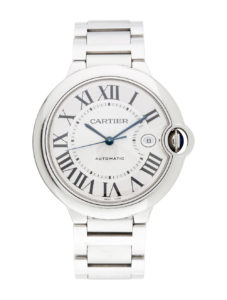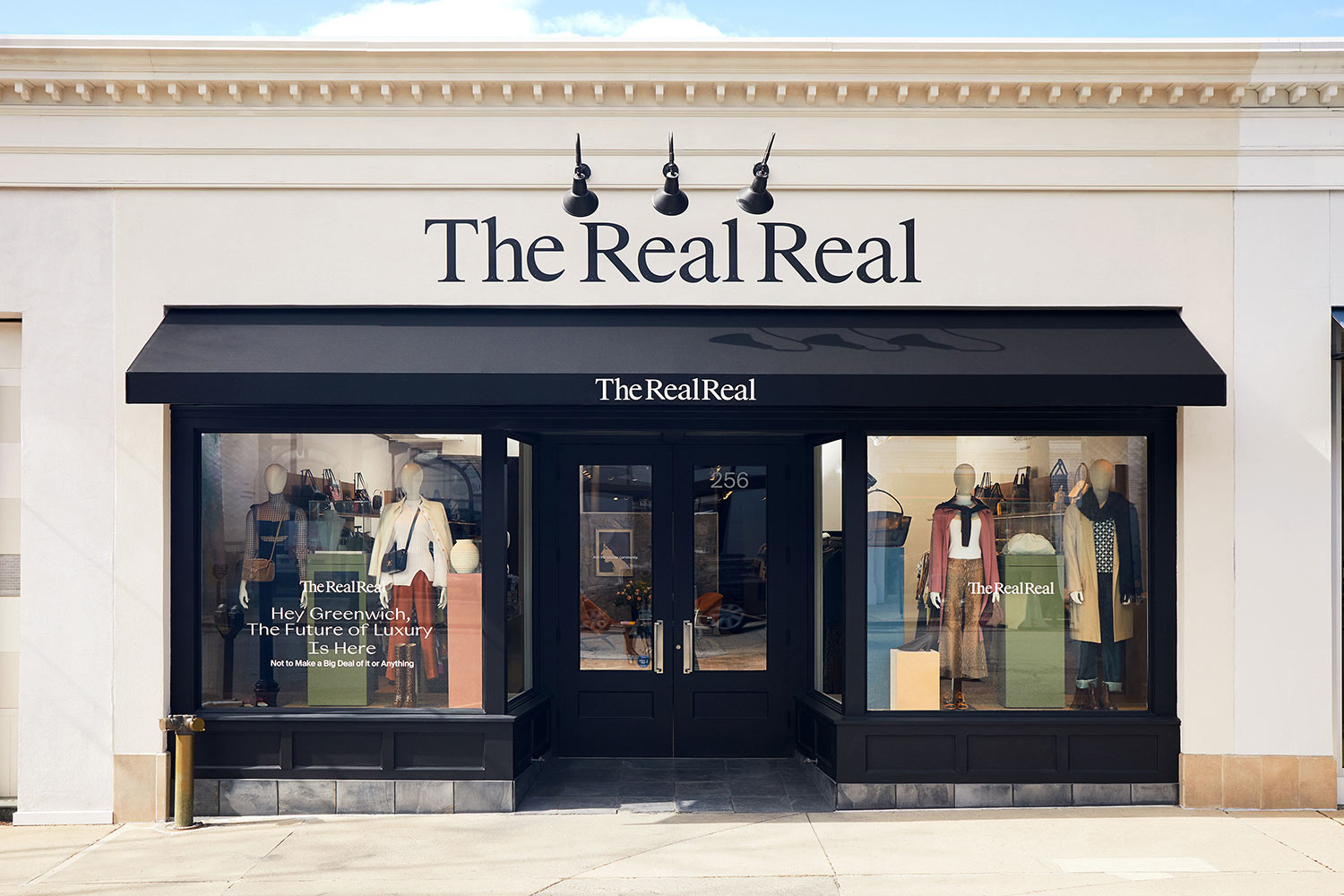To paraphrase the great Stephen Sondheim, does anyone still wear a watch?
True, that question seemed unthinkable even a decade ago – before cell phones seemingly became the primary device most Americans use to let them know what time it is. To some people, the query feels like the kind of quippy retort that deserves nothing more than an “OK Boomer” response. But the fact is American men of all ages, especially those in their 20s, are beginning to re-embrace the idea of putting on a traditional timepiece every day. This is a growing trend that’s been observed around the state by retailers and consumers alike. Women are buying watches, too, but when it comes to function and fashion, the movement is in the traditionally men’s category. Anecdotally, the thinking is that since women traditionally wear more and different types of jewelry, for men, the watch is the statement piece. At the same time, watches have no inherent gender identity, and consumers are ponying up for the watches that suit their needs—and their personal styles.
“Over the last year and a half, we’ve seen and heard from our customers that wearing a watch helped them maintain a sense of normalcy – even when it felt like time was at a standstill,” notes Giorgio Galli, creative director at Middlebury-based Timex.
While digital-display smart watches, most notably the “Apple Watch,” can be found on many a Metro-North commuter, if you look more closely, you’ll see plenty of other kinds of timepieces adorning men’s wrists. Indeed, the multiple of options on the market — from simple “dress watches” to fancy tourbillons boasting incredibly complex mechanisms (often on the face of the dial) to GMT chronographs that can show you the time in New York, London and Tokyo simultaneously – satisfy today’s savvy and often fashion-conscious consumer
 Secondly, there are a wide variety of watches available in terms of price points (from under $100 to over $10,000) to appeal to all level of consumers, making the watch an accessory that is affordable to all ages and professions. Moreover, great design isn’t limited to just the high-end timepieces.
Secondly, there are a wide variety of watches available in terms of price points (from under $100 to over $10,000) to appeal to all level of consumers, making the watch an accessory that is affordable to all ages and professions. Moreover, great design isn’t limited to just the high-end timepieces.
And lastly, but hardly least important, there are so many ways in 2021 to purchase watches—ranging from high-end jewelry stores and department stores to consignment dealers, eBay auctions and online websites—that owning one is as easy as 12-3-6-9.
“The men’s watch market is not just picking up, it’s on fire, notes Joseph Ladin, the CEO of SFLMaven.com, which holds weekly online eBay watch auctions. “As someone who has followed watch collecting for the past 18 years, it has been really exciting seeing the timepiece industry evolve to what it is today.”
SURVIVAL STRATEGY
While it would seem to be a logical conclusion that the COVID-19 pandemic made owning a watch seem less necessary, never mind less economical, that simply didn’t turn out to be the case for all consumers, according to both brands and retailers. “Sales for watches have been strong since June of 2020 and continue to grow at a healthy pace as people return to leisure activities and normal life,” says Gustavo Calzadilla, managing director of the Americas for Parmigiana Fleurier.
“Even during the worst days of the pandemic, we found men with money wanted what they wanted. So even if they couldn’t come into the store, they found other ways, such as email and texts, to order the brands of watches they desired,” says Al Armstrong, longtime owner of Hartford-based Armstrong Jewelers, which carries such top-line brands as Omega, Karl F. Bucherer, Blancpain, Arnold & Sons and Jaquet Droz. “And then as the pandemic simmered down, we found a lot of men had this pent-up demand for spending money and many of them wanted to use it to buy high-end watches.”
In some cases, watches were purchased both to wear and as a long-term investment, though not all retailers support the notion of watches as investment. Matthew Clarke, watch merchandising manager at The RealReal, an upscale resale chain with a location in Greenwich, notes, “For example, last year, we saw that sales growth for high-value investment watches was six times stronger than sales for low-value watches. Based on the demand and sales, we’re currently seeing for watches, we expect this trend to only continue, especially for timepieces from classic luxury brands. Men seem especially drawn to pieces such as the Rolex Submariner Date and Cartier Ballon Bleu that add both utility and elegance to their wrists.”
HELLO, YOUNG BUYERS
The youth market is playing a huge role in this growth as men in their 20s and 30s have started to become first-time watch buyers. As one young man recently told me: “I realize now that I am going back to work, it’s not cool to pull out my phone every time I need to check the time. It’s much more professional to just discreetly glance at my wrist.”
“Right now, the most enthusiastic watch buyers are in their 20s, and they are approaching this category with curiosity and discovery,” says Jeannette Purdy, general manager at New Milford, CT-based AMEICO (whose brands includes Braun. Lorenz and Sekford.) “Most of these guys have done research on the Internet, but some need to be coached as to how a watch works or the difference between a quartz and a mechanical watch. I’ve also heard anecdotally that some have trouble reading an analog clock face. There’s a lot of opportunity to do customer education here.”
Adds Clarke of The RealReal: “Gen-Z and Millennials represented the largest volume of our new consignors in 2020, and we’re continuing to see this strong engagement from younger demographics as they become more eco-conscious and gravitate towards companies that share these same values.”
“We’re definitely seeing many more men in their 20s and 30s come into the store, because they are seeing the importance of owning a nice watch, especially when they get their first big job or return to the office,” notes Roberto Manfredi, owner of Greenwich-based Manfredi Jewelers, which specializes in high-end brands.
“There are many reasons why we’re seeing younger consumers are coming back to watches,” says Joseph Babcock, director of product design at Nixon. “For them, watches land somewhere between a t-shirt, which can be change daily, and the tattoo, which most likely that will never change. To young consumers, a watch is a visible accessory that helps to expresses their personal style and values.”
EXPRESS YOURSELF
Something both retailers and brand executives also agree upon is that the watches that were popular in 2010 are often different than what was popular in 2020 and 2021, for a variety of reasons that go way beyond the concept of “fashion.”
“Today’s customer is more educated and more demanding than ever before. They are looking for authenticity, validity and experience in order to invest in a timepiece and make it their own and part of their self-expression,” says Zenith’s Thierry Colot, brand director for the Americas. “They’re not that interested in buying the same brand everyone else has or owning the same watch that their parents or grandparents wore. They want the watch that corresponds to their lifestyle.”
Moreover, the types of watches that many are choosing are influenced by new routines and lifestyles, says Galli. “For example, we saw Timex customers were interested in our more casual watches, like our T80 digital watch and our smartwatches like the Timex Metropolitan and Ironman R300, as they worked out at home or spent time outdoors. Now, as more individuals go back to the office and regain a sense of normalcy by seeing friends and family again, we anticipate that customers of all ages, especially younger ones, will not only need watches, but they will gravitate towards more fashion-forward watches and dress watches for work.”
Furthermore, as Nixon’s Babcock notes, few men are all work and no play: “Many guys will change their watch to suit the occasion or activity. For instance, they may wear a waterproof digital watch one day and then a bold chronograph that can also hold up to a weekend of adventure. Not to mention, we’ve been focusing on adding more sustainability to our line, including our watches made from ocean plastics. and the response to these watches has been incredible.”
FUN OR FUNCTION
For today’s consumers, expressing oneself through the choice of watch elevates the choice beyond just telling the time.
“Both fashion and function are part of the purchase equation these days,” states John Green, owner of Lux Bond & Green, which has stores throughout Connecticut. “The cool factor, the movement type, the rarity, the look, the gadgets, the power reserve, the materials, and the statement it makes are all important today for the purchaser. Certainly, chronographs and other specialty watches are attracting a lot of new and younger customers. Also, the idea of men’s or ladies’ watches has been replaced by the millimeter size. We’ve also found that automatic watches (those that need winding rather than ones that run by battery) continue to grow in our market. Our conversations have become more creative.”
Manfredi agrees. “In large part because of the Internet, men now know the difference between mechanical, automatic and quartz watches, and that becomes a big factor in their decision-making. But the advantage of coming into the store, rather than buying online, is we can ask the customer the right questions, such as do you wear watch every day or do you want a watch that you wear less often so it’s okay if you wind it first? Ultimately, the answer to questions like that makes a difference in what someone buys.”
“There are those buyers who are captivated by the aesthetics and often find the functions less important,” says Calzadilla. “On the other hand, there are plenty of watch enthusiasts that prefer to focus on certain complications or other functions and find the look secondary. Fortunately, both categories are doing well for us.”
“What we find at SFL is that typically both form and function are considered with function coming first followed by fashion,” says Ladin. “On the function side, for example, many buyers really consider things like how the watch reacts to the climate or how water resistant the watch is.”
Moreover, as Armstong also points out, function also turns out to be a fungible concept. “We sell a lot of timepieces with a stopwatch function. The difference is some guys are interested in that as a tool to tell time when they’re doing exercise, while others use it just so they know when to turn the fish on the grill.”
In the end, the reasons to buy and wear a watch are as diverse as the customers. “We often hear things like how their watch was a conversation piece during their business dinner or are given examples of how their watch connected them with other like-minded people in their community,” notes Ladin. “The power of a great watch is pretty remarkable.”
BY BRIAN SCOTT LIPTON








More Stories
Connecticut Sun: Playing for Good
Call Him Mister Connecticut: Jean Carlo Salazar’s Journey as Nurse, Model and Pageant Contestant
Ensuring a Seat at the Table